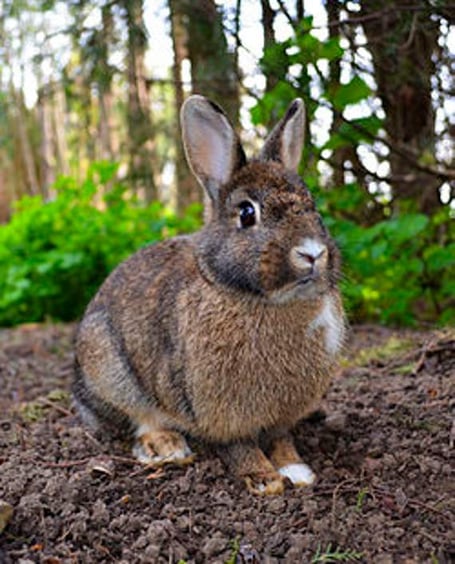A VIRULENT killer virus from China has decimated wild rabbits, leaving thousands bleeding to death in their burrows.
Although wild rabbits in East Hampshire have never been monitored, countryside organisations and those living and working rurally agree they have almost disappeared.
Ian Cuthbertson lives near East Meon at the foot of the South Downs, and the country sports enthusiast says there are few, if any, rabbits left here because of the virus Rabbit Haemorrhagic Disease strain 2 (RHD2).
He said: “They get massive internal bleeding and die in their burrows. It must be a horrible way to go, you wouldn’t wish it on rats.
“There used to be wild rabbits everywhere along the downs, and up to Bordon. Now you are lucky to see one.”
This area is described as prime rabbit country by those concerned about the increasing evidence of the virus, first discovered in China. It arrived in Europe in the 1980s.
Sam Carlisle of the Countryside Alliance said: “This area had probably the strongest rabbit population in the UK. The decline here has accelerated and the drop in rabbit numbers is now really severe and noticeable.”
And Dr Jonathan Reynolds of the Game Wildlife Conservation Trust near the New Forest says the rabbit population is still falling.
He added: “The situation is severe, and we don’t know when it will ever recover to pre RHD2 levels. Where there were plenty of rabbits, there are hardly any now.”
The virus arrived in the UK between 10 and 15 years ago, and then mutated into RHD2, a more savage and virulent strain.
Scotland, with its wide open spaces, has seen its wild rabbit population decimated.
The spread southwards was slowed by the isolated nature of rabbit areas.
It is thought the virus arrived here about five years ago, and the 100 miles of open down and farmland along the South Downs allowed it to spread unchecked.
A South Downs National Park Authority spokesman said: “Anecdotally, we’re seeing fewer numbers. And there is evidence it may have moved into the brown hare.”
It is hoped once the virus has run its course, or rabbits develop immunity, the survivors will start the repopulation – but there may not be enough survivors to save the day.
A Hampshire and Isle of Wight Wildlife Trust spokesman said: “As they build immunity, the virus mutates and the rabbit population crashes again, and the process repeats.”
Mr Cuthbertson added: “I have thought about releasing rabbits from virus-free areas to help repopulate the area, but it’s not worth it until the virus has run its course.”
The Department for the Environment, Food, and Rural Affairs is monitoring the virus, and said it was not a notifiable disease and there were no risks to public health.




